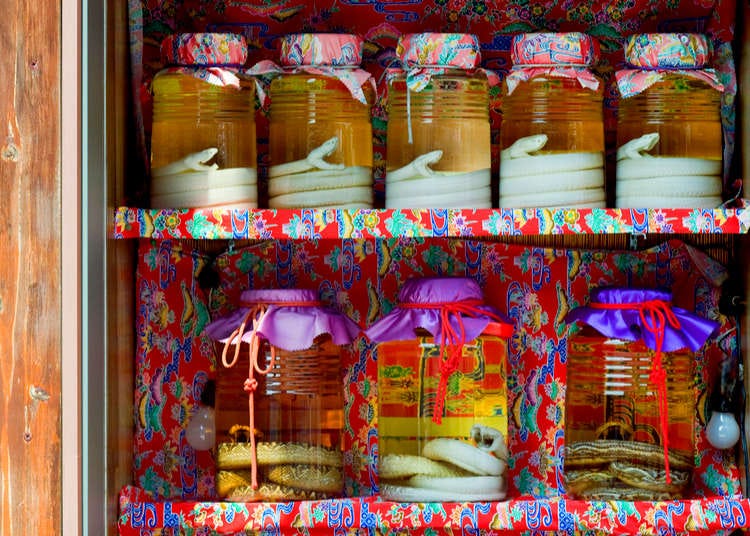
If you think of alcohol and Japan, then the first thing that springs to mind is sake – but there are other alcoholic drinks too, one of which comes from the island of Okinawa! Awamori is an alcoholic drink which is also known as shimazakae, or island sake.
It dates back hundreds of years, not quite as old as sake which is at least 1300 years old, but not soon after the start of agriculture in Okinawa. Using long grain indica rice, the origins of the Awamori brewing technique can be found in Thailand, and even today as local production of this rice is not sufficient indica rice from Thailand is imported to make this celebrated drink. It has an alcoholic percentage ranging from around 30°ー60° and in Okinawa it is drunk at pretty much any social occasion, whether that be celebrations or just a casual gathering of friends. Not so well known as its older cousin sake, Awamori is gradually making its presence known and is increasingly sought out by adventurous visitors to Japan who want to try everything this amazing country has to offer.
What is Awamori?
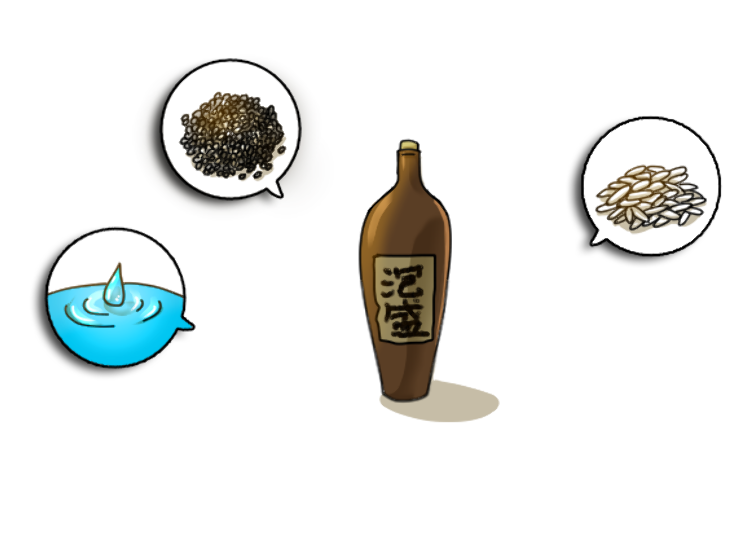
The rather original manufacturing process for distilling Awamori came from Thailand and involves black koji (a kind of yeast) mold being added to long grain indica rice and water, this is then left to age in order to create a mold. This is distilled in pot stills, in some ways it is similar to the production of shochu, and the resulting brew is actually 100° pure alcohol. Once it has been distilled it is put into storage, it needs to be stored for an extended period of time in order to improve its mellowness. A characteristic of this drink is how its taste and aroma are enriched by a natural aging process. The distilled awamori is then aged in clay pots, usually kept in cool underground storerooms.
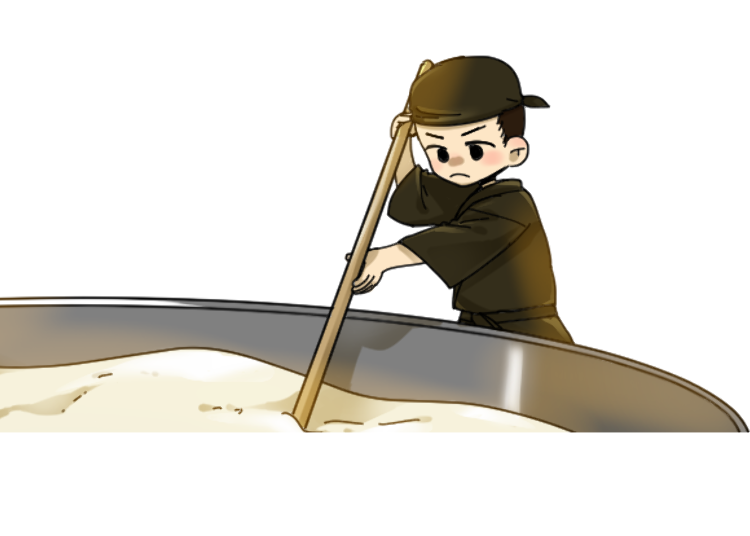
It is the black koji that is used in the fermentation process which gives it its unique flavor. This variety of yeast produces a lot of citric acid, which incidentally helps prevent the souring of the moromi (the rice and water mixture). It is very effective in extracting the taste and character of the mixture. Black koji was found in Okinawa and it has been found to be resistant to high temperatures and humidity. The name of the resulting alcohol, Awamori, is thought to refer to the appearance of the mixture during the distillation process where one can see a lot of bubbles rising and swelling (in Japanese ‘awa’ means bubbles and rising/swelling is ‘mori’).
The distillation takes place in a traditional still, heated directly by a flame with oxygen supplied by large fans. The solid mass of swollen rice grains is distilled once, and after about 4 hours the alcohol percentage reaches 70°. Water is added to arrive at the final product with an alcohol percentage of around 30°, except for a product called hanazake that is around 60°.
In a similar style to sake and shochu, Awamori is sold in large bottles of 1.8 liters, and also smaller sizes of around half that volume. In general it is quite inexpensive, but unlike sake this alcohol can be aged and becomes more valuable as it gets older. There are around 48 local distilleries dedicated to making varieties of awamori in Okinawa. These labels vary in taste, from mild to strong, and various accents depending on the containers they are distilled in, from stainless tanks to earthenware pots and even casks.
How to Drink Awamori
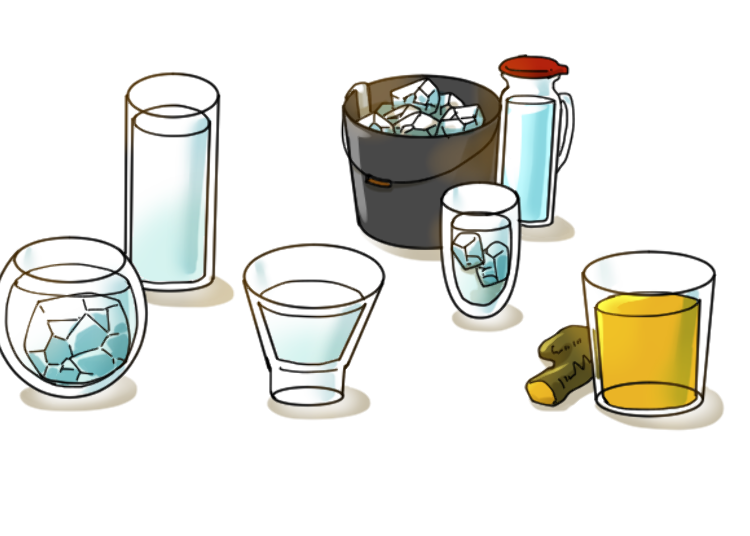
As Awamori does have a strong alcoholic content it is usually served together with water and ice, you can drink it straight with some ice, dilute it with water or even add it to a cocktail. No further special equipment required! As Awamori is actually sugar free with no amino acid content, it has a lower calorie level than other comparable drinks, so it is perfect for people with high blood sugar. Some people like to use something slightly different to water to mix their Awamori with, such as sparkling water, but you can also see locals adding coffee milk to their drink! This makes it very easy to drink!
Different Types of Awamori
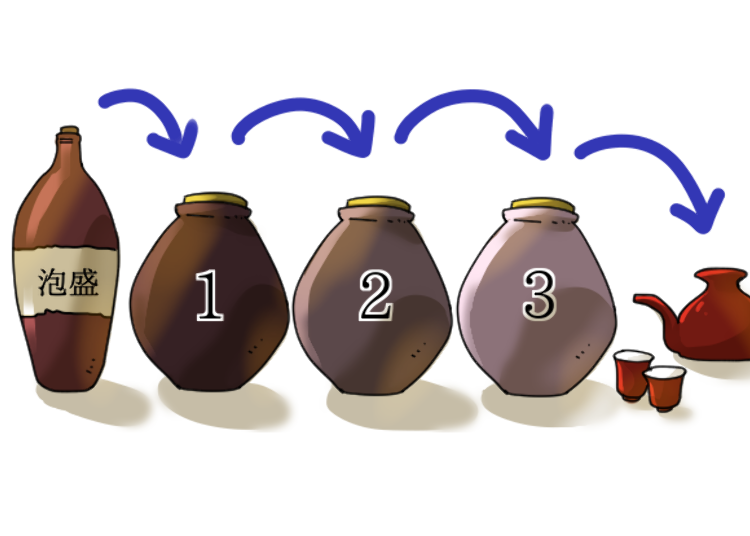
Kusu
Once Awamori has been aged for three years or more it is given a new name of Kusu, although in the rest of Japan the pronunciation koshu is used, but anyway this literally means old sake. Japanese law dictates that the bottled spirits must be at least 3 years old, but Awamori producers often mix older spirits with younger spirits to preserve the stock of older spirits. Before World War Two there were records of two to three hundred year old kusu, but unfortunately these were all lost.
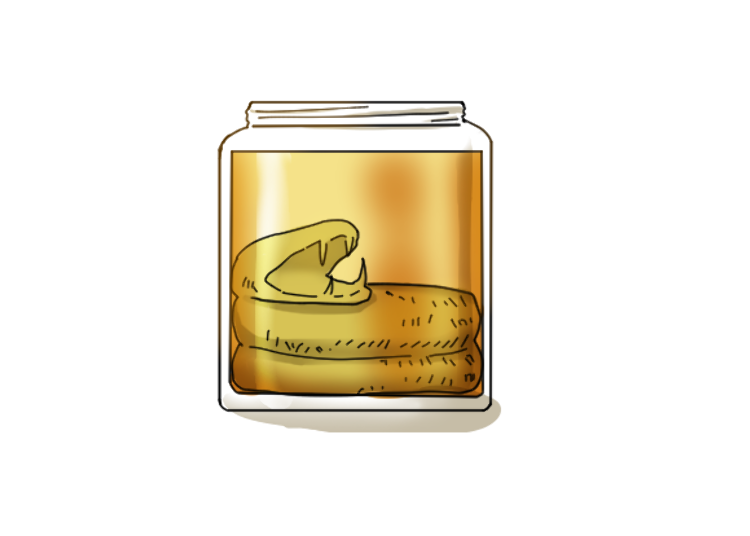
Habushu
You’ll see bottles and large jugs of lethal-looking habushu (“snake liquor”) all over liquor shops and souvenir shops in Okinawa. Pit vipers are soaked in awamori, herbs and honey for a dramatic-looking drink. The liquid has a yellow hue and is believed to have medicinal properties and libido-enhancing qualities. Sometimes the snake is drowned alive in the awamori, alternatively the snake made unconscious from freezing, then gutted before being sewn up, before dying in a violent manner - what the producers are looking for. The snake is then preserved in an ethanol bath for a month before soaked in awamori.
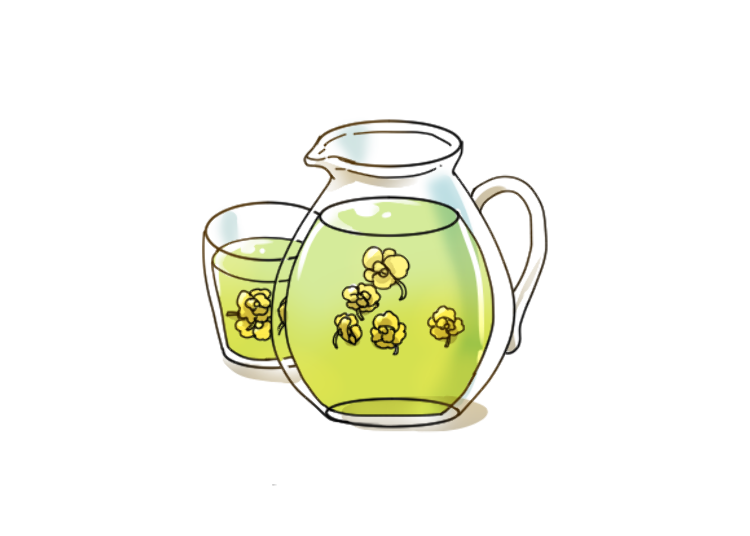
Hanazake
On an Okinawan island called Yonaguni, which is also Japan's westernmost island, there are three distilleries which are producing a variant of Awamori called Hanazake. Literally meaning “flower sake”, hanazake drink packs a punch with an alcohol percentage of 60°, and is normally drunk straight. Originally it was intended for religious ceremonies, but today you can see brave souls drinking this for pleasure and social occasions.
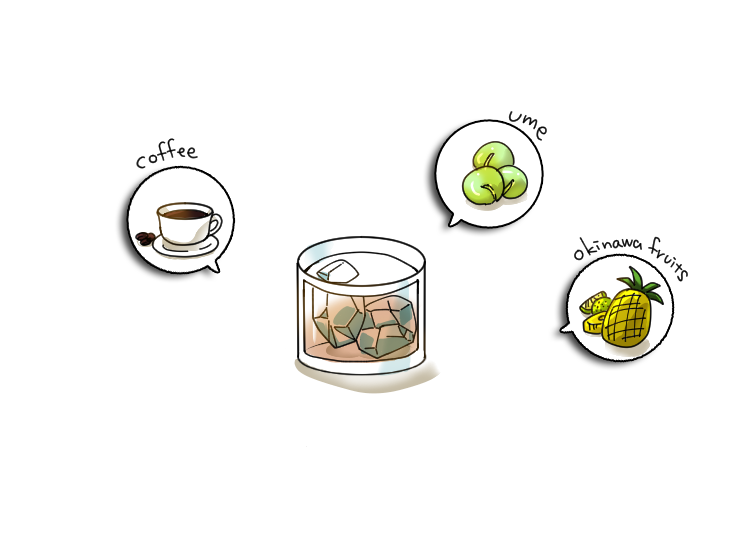
Flavor-infused Awamori
Japan being Japan it is no surprise that other flavored varieties of Awamori has been created, for example there is a plum version which is perfect for around the beginning of spring when the plum blossoms are out, and for locals who love their Awamori with coffee milk there is now a ready-made coffee flavored version too. In general a number of flavors have made their debut, normally with local fruits, such as passion fruit or mango, in order to broaden its appeal to a wider range of people.
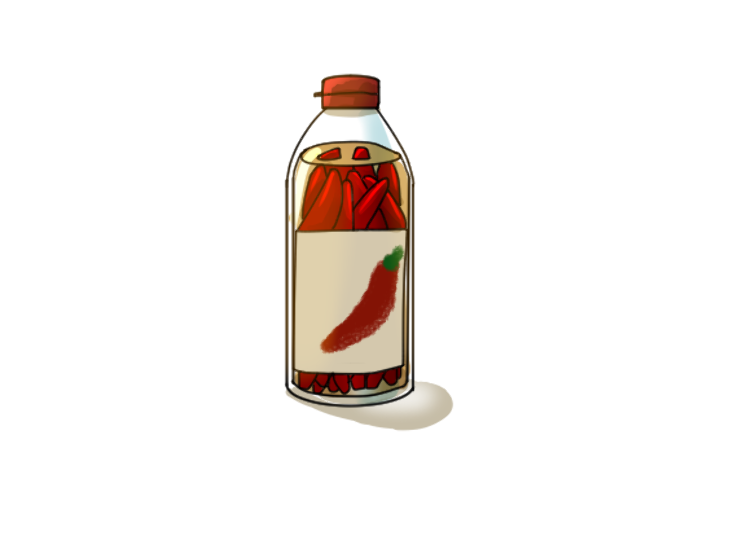
Koregusu (Hot Sauce)
In particular the people of Okinawa like spicy food and a popular local condiment is koregusu is just the ticket for adding some heat to any dish. It is made from chili peppers, which are washed, and then soaked in Awamori for at least 10 days. It can be bought in supermarkets, but it is often homemade. It is then added on pretty much anything, whether that is rice or Okinawan noodles, or sonki-soba. Unlike a regular chilli sauce, koregusu has a wafting fragrance of Awamori that adds depth as well as heat to the dish.
Awamori is essential for knowing Okinawa
Just as to a certain extent sake embodies Japan, and is therefore an essential drink to try when visiting Japan, Awamori embodies the islands and culture of Okinawa. To try this drink is to impart some of the local culture, and to add some koregusu will mean literally imparting some Okinawan fire!
*Prices and options mentioned are subject to change.
*Unless stated otherwise, all prices include tax.
Popular Tours & Activitiess
Recommended places for you
-

Jukuseiniku-to Namamottsuarera Nikubaru Italian Nikutaria Sannomiya
Izakaya
Kobe, Sannomiya, Kitano
-

Kambei Sannomiyahonten
Yakiniku
Kobe, Sannomiya, Kitano
-

Kanzenkoshitsuyakinikutabehodai Gyugyu Paradise Sannomiya
Yakiniku
Kobe, Sannomiya, Kitano
-

ISHIDAYA Hanare
Yakiniku
Kobe, Sannomiya, Kitano
-
Goods

Yoshida Gennojo-Roho Kyoto Buddhist Altars
Gift Shops
Nijo Castle, Kyoto Imperial Palace
-
Appealing

Rukku and Uohei
Izakaya
Sapporo / Chitose
-

LaLaport TOKYO-BAY North Building Now Open: Shop, Dine & Enjoy Events at LaLa arena, Just 2 Stops from Disney
by: Wemmy Chau
-

Don't Miss Out! The One Thing You Must Do Before Shopping at Mitsui Shopping Park LaLaport: Get Your Max 10% OFF Coupon Book
-

2025 Japan Autumn Color Report: Tokyo's Ginkgo Trees Starting to Glow
by: Timothy Sullivan
-

Get Ready to Catch 'Em All! First Ever Permanent Outdoor Pokémon Park Opening Near Tokyo!
-

See Asakusa and Tokyo Skytree® in a New Light at the "Také Akari" Festival (Winter 2025-2026)
by: Guest Contributor
-

Black Friday 2025: These Are THE Japan Travel & Shopping Deals to Check Out
-

Tokyo Sightseeing Deals: 1 Day of Unlimited Rides on the Tokyo Skyhop Bus for Under $30!
-

Ultimate Guide to the Best Sightseeing Spots Near Osaka and Umeda Stations!
by: WESTPLAN
-

Explore the Charm of Tsukishima: Tokyo's Hidden Treasure
-

Complete Guide to Buying Japanese Medicine in Japan: Phrases and Vocabulary You Need to Know
-

Hakodate 2-Day Itinerary for Exploring Japan's Foodie North!
-

Cherry Blossoms in Tokyo: 12 of the City's Best Places for Sakura in 2025
- #best sushi japan
- #what to do in odaiba
- #what to bring to japan
- #new years in tokyo
- #best ramen japan
- #what to buy in ameyoko
- #japanese nail trends
- #things to do japan
- #onsen tattoo friendly tokyo
- #daiso
- #best coffee japan
- #best japanese soft drinks
- #best yakiniku japan
- #japanese fashion culture
- #japanese convenience store snacks












